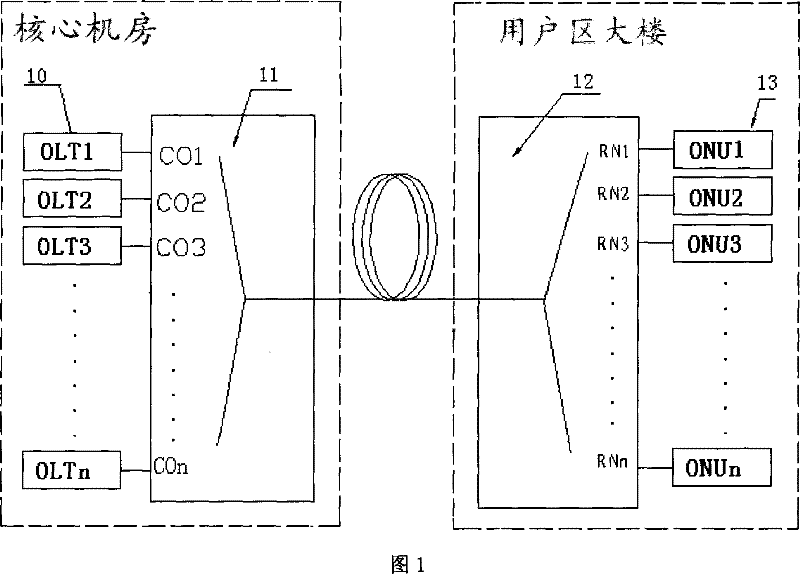Hybrid Passive Optical Network System
A passive optical network, hybrid technology, applied in the direction of wavelength division multiplexing system, etc., can solve the problems of expensive network cost, affecting the development of EPON, network impact, etc., to expand the network range, facilitate network performance maintenance and management, reduce troublesome effect
- Summary
- Abstract
- Description
- Claims
- Application Information
AI Technical Summary
Problems solved by technology
Method used
Image
Examples
Embodiment Construction
[0024] Such as figure 1 As shown, a hybrid passive optical network system includes:
[0025] A plurality of optical line terminals (OLT) 10 of the Ethernet optical network, that is, OLT1, OLT2, OLT3, ..., OLTn in the figure, each optical line terminal 10 occupies two different wavelengths of the coarse wavelength division multiplexing (CWDM) standard . For example, OLT1 is respectively λ1, λ1', OLT2 is respectively λ2, λ2'; OLT3 is respectively λ3, λ3'; ...; OLTn is respectively λn, λn'. They are respectively used for the transmission of optical signals at the OLT transmitter and receiver. Among them, the transmitting end of the OLT can use a distributed feedback Bragg grating (DFB) laser, and each OLT is stored side by side in the core computer room.
[0026] Coarse wavelength division multiplexing and demultiplexing device 11, used for optical signals of different wavelengths (λ1, λ1', λ2, λ2', λ3, λ3', ..., λn, λn') of the multiple OLTs in Transmission is performed on t...
PUM
 Login to View More
Login to View More Abstract
Description
Claims
Application Information
 Login to View More
Login to View More - R&D
- Intellectual Property
- Life Sciences
- Materials
- Tech Scout
- Unparalleled Data Quality
- Higher Quality Content
- 60% Fewer Hallucinations
Browse by: Latest US Patents, China's latest patents, Technical Efficacy Thesaurus, Application Domain, Technology Topic, Popular Technical Reports.
© 2025 PatSnap. All rights reserved.Legal|Privacy policy|Modern Slavery Act Transparency Statement|Sitemap|About US| Contact US: help@patsnap.com


